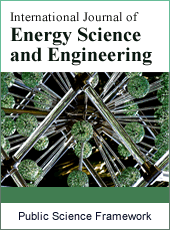International Journal of Energy Science and Engineering
Articles Information
International Journal of Energy Science and Engineering, Vol.3, No.3, May 2017, Pub. Date: Aug. 1, 2017
Improving Energy Performance of Existing Office Buildings
Pages: 29-36 Views: 2547 Downloads: 966
[01]
Lamiaa Abdallah, Alexandria Higher Institute of Engineering & Technology (AIET), Alexandria, Egypt.
[02]
Tarek El Shennawy, Alexandria National Refinery & Petrochemicals Co. (ANRPC), Alexandria, Egypt.
Egypt, as a developing country, suffers an energy crisis manifested by limited energy resources and increasing demand. This crisis is anticipated to worse in next few years due to the fast developments in major sectors of the country, including the building sector. The existing building stock in Egypt consumes more than 60% of the electrical energy. Improving the energy performance in buildings can be done by retrofitting the building envelope, using more efficient energy-using equipment such as lighting and air conditioners, using renewable energy sources, and altering the occupants’ behavior concerning energy usage. In this paper, a quick, easy-to-implement procedure is proposed for implementation in existing office buildings. The procedure combines both economic and environmental aspects of energy conservation methods and prioritize them, along with the solution economics, energy saving and environmental benefits. An office building in Alexandria, Egypt, is taken as a case study to illustrate the effectiveness of the procedure. The results are easily presented to the decision makers. The procedure can be applied to most non-residential buildings. A national action plan is required immediately to be implemented in Egypt seeking for energy conservation actions in the existing building sector, which can save energy, decrease fuel imports to operate power plants, decrease the need to build new power plants, decrease the associated carbon dioxide emissions and improve the overall economic situation of the country.
Energy Conservation, Energy Efficiency, Office Buildings, Retrofitting, CO2 Emissions
[01]
International Energy Agency (IEA), “Energy, Climate Change and Environment: 2016 Insights”, IEA Publications, France, November 2016.
[02]
United Nations Environment Programme (UNEP), “Buildings and Climate Change”, Sustainable Buildings & Climate Initiative (SBCI).
[03]
United Nations Development Programme (UNDP) & Global Environment Facility (GEF), “Promoting Energy efficiency in buildings”, 2010.
[04]
Z. Ma et al., “Existing building retrofits: methodology and state-of-the-art”, Energy and Buildings, vol. (55), pp. 889–902, 2012.
[05]
U.S. Department of Energy (DOE), “Strategies for 50% Energy Savings in Large Office Buildings”, National Renewable Energy Laboratory (NREL), 2010.
[06]
U.S. Department of Energy (DOE), “Advanced Energy Retrofit Guide: Office Buildings”, Pacific Northwest National Laboratory (PNLL), 2011.
[07]
European Commission, “Energy-Efficient Buildings: Multi-annual roadmap for the contractual Public Private Partnership (PPP) under Horizon 2020”, Luxemburg, Publications Office of the European Union, 2013.
[08]
Hans Erhorn and Heike Erhorn-Kluttig, “Selected examples of Nearly Zero-Energy Buildings”, Energy Performance of Buildings, September 2014.
[09]
The Energy Conservation Center, Japan, “Energy Conservation for Office Buildings”, 2010.
[10]
Peng Xu et al., “Assessment of energy-saving technologies retrofitted to existing public buildings in China”, Energy Efficiency, vol. (9), pp. 67–94, (2016).
[11]
The Energy and Resources Institute (TERI), “Roadmap for Incorporating Energy Efficiency Retrofits in Existing Buildings in India”, 2013.
[12]
Sarah A. Al-Ghamdi et al., “Energy Conservation by Retrofitting: An Overview of Office Buildings in Saudi Arabia”, International Conference on IT, Architecture and Mechanical Engineering, May 22-23, 2015 Dubai (UAE).
[13]
Egyptian Electricity Holding Company (EEHC), “Electricity Annual Report: 2014-2015”, 2015.
[14]
Ministry of Planning, Cairo, Egypt, “Sustainable Development Strategy: Egypt’s Vision 2030”, 2015.
[15]
Egyptian Central Agency for Public Mobilization and Statistics (CAPMAS), “Egypt Census: 2006”, 2006.
[16]
G. Hanna, “Energy efficiency building codes and Green Pyramid Rating System”, International Journal of Science and Research, vol. 4(5), pp. 3055-3060, 2015.
[17]
K. Ayyad and M. Gabr, “Role of Environmentally Conscious Architecture and Planning as Components of Future National Development Plans in Egypt”, Buildings, vol. (3), pp. 713-727, 2013.
[18]
A. Sarhan et al., “Thermal envelope retrofit: an assessment framework”, WIT Transactions on Ecology and The Environment, vol. 2, pp. 803-813, 2013.
[19]
N. Abd-Allah et al., “Energy Conservation in Existing Office Building: Case study Petrojet Company Head Office Buildings in Cairo, Egypt”, World SB 2014, Barcelona, Spain, 28-30 Oct. 2014.
[20]
A. Radwan et al., “Retrofitting of existing buildings to achieve better energy-efficiency in commercial building case study: Hospital in Egypt”, Alexandria Engineering Journal, vol. 55, pp. 3061-3071, 2016.
[21]
M. Aboulnaga and M. Moustafa, “Sustainability of higher educational buildings retrofitting approach to improve energy performance and mitigate CO2 emissions in hot climates”, Renewable Energy and Environmental Sustainability, 1, 28 (2016).
[22]
D. White, “Evaluating the Economics of Energy Saving Projects”, American Institute of Chemical Engineers (AIChE), December 2011.

ISSN Print: 2381-7267
ISSN Online: 2381-7275
Current Issue:
Vol. 5, Issue 1, March Submit a Manuscript Join Editorial Board Join Reviewer Team
ISSN Online: 2381-7275
Current Issue:
Vol. 5, Issue 1, March Submit a Manuscript Join Editorial Board Join Reviewer Team
| About This Journal |
| All Issues |
| Open Access |
| Indexing |
| Payment Information |
| Author Guidelines |
| Review Process |
| Publication Ethics |
| Editorial Board |
| Peer Reviewers |


